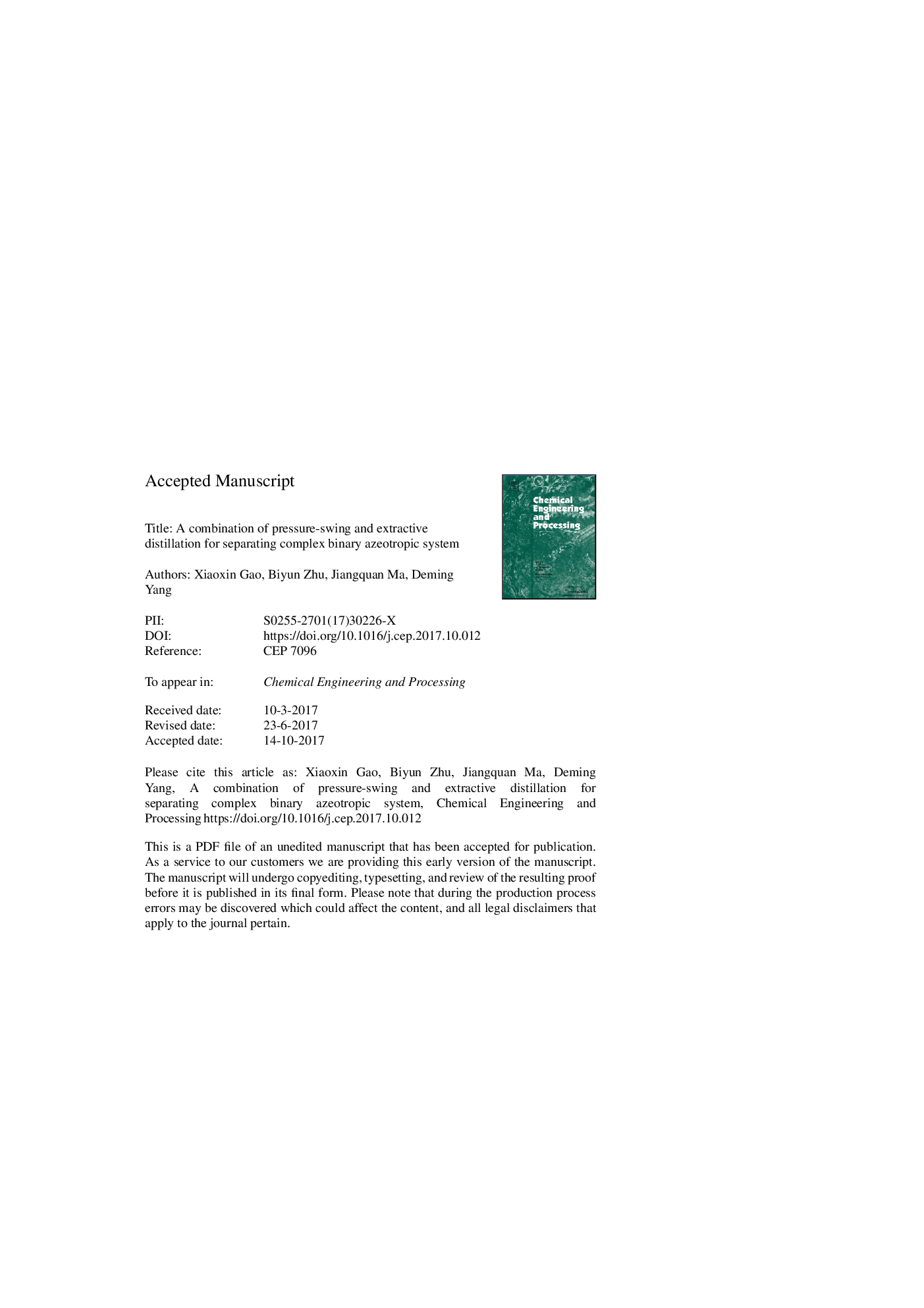| Article ID | Journal | Published Year | Pages | File Type |
|---|---|---|---|---|
| 7089447 | Chemical Engineering and Processing: Process Intensification | 2017 | 27 Pages |
Abstract
Methyl acetate/methanol/water mixture forms more than one different azeotrope, whereas its triangular diagram presents a distillation boundary at atmospheric pressure. The two different simulation processes of the double column pressure-swing with extractive distillation (DCPSED) and triple column pressure-swing with extractive distillation (TCPSED) were proposed to separate the complex ternary system. Furthermore, the heat integration and mechanical vapor compression (MVR) heat pump distillations were also tested (through simulation) to separate the complex ternary system to save energy. The feasibility of the processes was confirmed using vapor-liquid equilibrium curve, while rigorous steady-state simulations were implemented using Aspen Plus (version 7.1). With the goal of achieving minimum energy consumption and minimum total annual cost (TAC), the purities of methyl acetate, methanol and water were used as the constraint variables. The results show that water was a better solvent for this separation system. Compared with the TCPSED process, the energy consumption and TAC for DCPSED process could be reduced by 44.83%, and 47.74%, respectively. Compared with the DCPSED and DCPSED with heat integration processes, DCPSED with MVR process could reduce the energy consumption by 73.34% and 59.52%, while TAC was decreased by 37.64% and 11.77%, respectively. The simulation results indicated that DCPSED with MVR process has great advantage over other processes used to separate methyl acetate/methanol/water ternary mixture.
Related Topics
Physical Sciences and Engineering
Chemical Engineering
Process Chemistry and Technology
Authors
Xiaoxin Gao, Biyun Zhu, Jiangquan Ma, Deming Yang,
